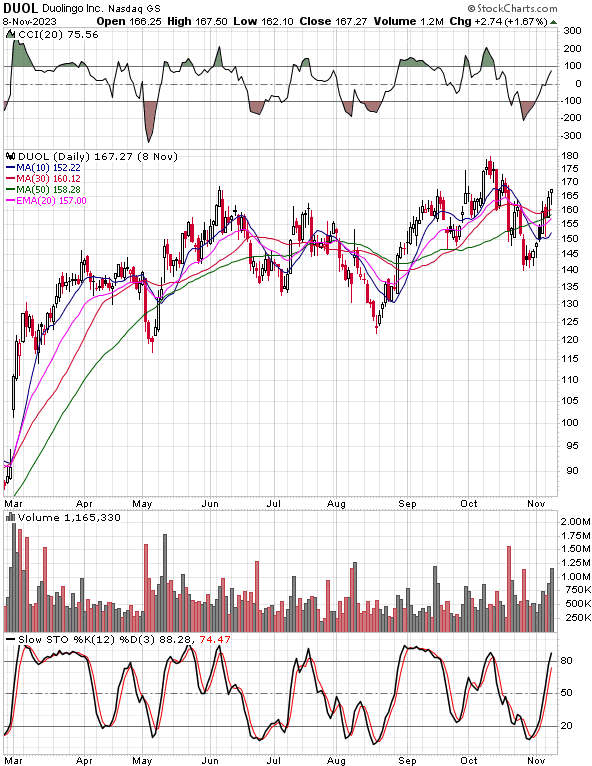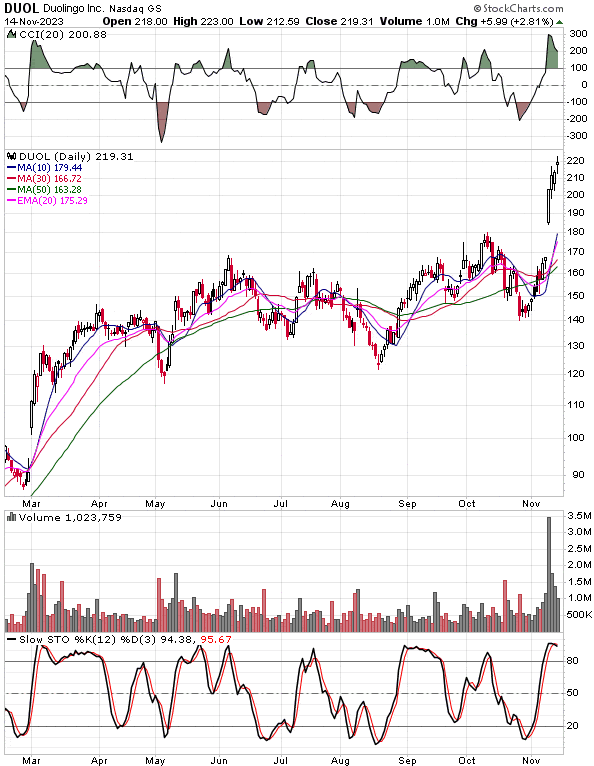Should You Buy an IPO Stock?
Last week we revealed one of our favorite swing trading strategies in detail. We just used this powerful strategy on a great IPO this past week. Some wonder if they should buy an IPO and this blog post answers the question that vexes a lot of traders.
Should You Buy a Stock IPO?
No.
Ok, that’s it for the week. See you again next time. 🙂
I’m kidding but that is the response from a lot of investors and traders.
Some even claim that IPO stands for “Its Probably Overpriced”. However, as a trader, dismissing all IPOs early on after going public is a mistake in my opinion. Lets talk about the 2 situations where we trade IPOs.
Trading an IPO in the First Few Months
So there are hot IPO markets and cold IPO markets. Over the past couple years its been pretty cold overall. We are starting to see some good ones recently, but they are still a bit sparse.
A lot of great companies will not go public in a lousy IPO market so we just have to wait for the IPO market to heat back up again. If this new market uptrend gains more traction, we should see more top IPOs to trade in the months ahead. If we head into a hard economic landing soon, not so much.
But the first thing to do is look at what IPOs are coming up and how recent IPOs have traded. To do this, we can look at free sites such as ipscoop and their IPO calendar.
The better IPOs usually have at least hundreds of millions of estimated volume. Smaller ones tend to be too illiquid to be able to get in and out near the current price reliably. They also carry more risk.
We can also look at how well recent IPOs have traded. In their list of the last hundred IPOs we can run through them and see how many are above the IPO price and if the average IPO has gone higher from the IPO price. Right now, we see most are not and reflects the weak IPO market this year.
Trading the First Few Months of the IPO
In a future video, we will talk about what to look for on the first day of the IPO. Usually I want to see the price gapping well above the IPO price announced days before the IPO starts trading.
In a strong IPO market, your broker may make some pre-IPO shares available and its worth a look. If its a great company with strong growth, a path to profitability and a large total addressable market, it may be worth buying if the IPO market is healthy enough. The best ones often gap well above the IPO price and trend higher overall into the first earnings release.
On day 1, we like to look for the stock to open well above the pre-announced IPO price, consolidate for at least about 10 minutes, and then break above the opening range before getting long. We also like to trade large A-B-C-D patterns on day 1 if the opening range breakout goes well.
We look for a pullback to around the 9 or 20 EMA on a five minute chart that takes at least a half hour and then a bullish candlestick pattern on a five minute chart or kick off the 9 or 20 EMA on a five minute chart as an entry signal. We like to use a 2.5% to 4.5% stop, looking for a profit of 6% to 15%.
These work well on IPOs that are up a lot on the first day in a strong IPO market. You also often see a late day rally in the last hour of trading on the first day as well. Perhaps some investors or algorithms are checking to see if the price holds up before buying near the close.
The entry point late on the first day might be a strong flag breakout on a five minute chart, a double bottom, or kick off the 9 EMA late in the session on day 1. These also often follow through the next day as well when the IPO market is strong enough.
Swing Trading the First Few Months
The trading playbook for IPOs is to either buy pre-IPO or on a bullish technical signal in the first couple weeks of trading. Then sell into the first earnings release. Study past IPOs and you will see this play out over and over on the good ones.
The time between the IPO date and the first earnings release is where the fun is when trading IPOs. You often get a bullish pattern such as a high tight flag. A high tight flag on a recent IPO has a lower win rate within the first few months but the winners often go a long way.
TLRY is a good example of a great swing trading setup on an IPO. From the first high tight flag breakout, tlry soared more than 500% within a couple months. We will trade this pattern on a recent IPO but generally only within the first few months.
When We Do Not Trade a Hot IPO
A big gap higher after the first earnings report and then a break of the pre-market high is often met with selling soon after. This is just the opposite of a great growth stock after its been trading for a few years. After a few years of trading, its a bullish entry point.
Sometimes after that first earnings report the stock will pull back from there about 10% or so within minutes, bounce and consolidate and then break into new highs again later in the morning or afternoon. This can be a bullish entry point in a strong market but not where we want to overstay our welcome.
The stock will generally start to turn over from there and start a new longer-term downtrend after that first earnings release and weeks ahead of the lockup expiration. From there, you very often see a long downtrend or consolidation for at least a year or so.
Another Great Swing Trading Strategy for IPOs
Over the first couple years of being a public company, some IPOs will have strong sales growth, approach profitability or experience strong earnings growth and develop a new uptrend.
Around the 5 year mark or a little sooner in a market uptrend we will start looking for a solid uptrend developing and a bullish consolidation pattern.
Here is a great example from last week in the alert service. The stock was Duolingo (ticker DUOL).
Here is how the stock looked when we featured it last Wednesday just before an explosive move higher.

Charts courtesy of StockCharts.com
The stock had broken out of a double bottom with handle pattern ahead of the market selloff in October. It recovered and formed another handle and was basically within a 6 month consolidation. The stock had also marched higher after one big earnings surprise after another over the past year.
The stock was now within 30% of the all-time highs after the typical post lockup expiration downtrend. Of course 2022 was a bear market but this big pullback that starts just before lockup expiration a few months into trading is the norm for IPOs.
The stock had been trading for over 2 years which is another plus. After hours last Wednesday, the price was breaking strongly out of the consolidation on another big earnings beat and guidance raise.
So we have a strong uptrend, a long consolidation, a stock with great growth and outlook within 30% of the highs. We then had the big catalyst taking the price to the breakout point in the consolidation.
Its important to wait for the price direction confirmation the next day which we got early. From there, the stock was off to the races and went up another 22% in just a few days.
The real advantage of waiting for these ideal moments is that you can trade this with a very tight stop-loss which allows us to take a bigger position with a stock that is likely to take off or turn over. There is not too much in between in this situation when market conditions are good enough which is usually the case.
Here is the chart now. We can see its already breaking out of the first earnings flag. This stock is one to watch for strong consolidation patterns coming up in the months ahead.

Charts courtesy of StockCharts.com
We ran out of time to talk about the third strategy we love to trade, channeling stocks, but look for it in the weeks ahead.




